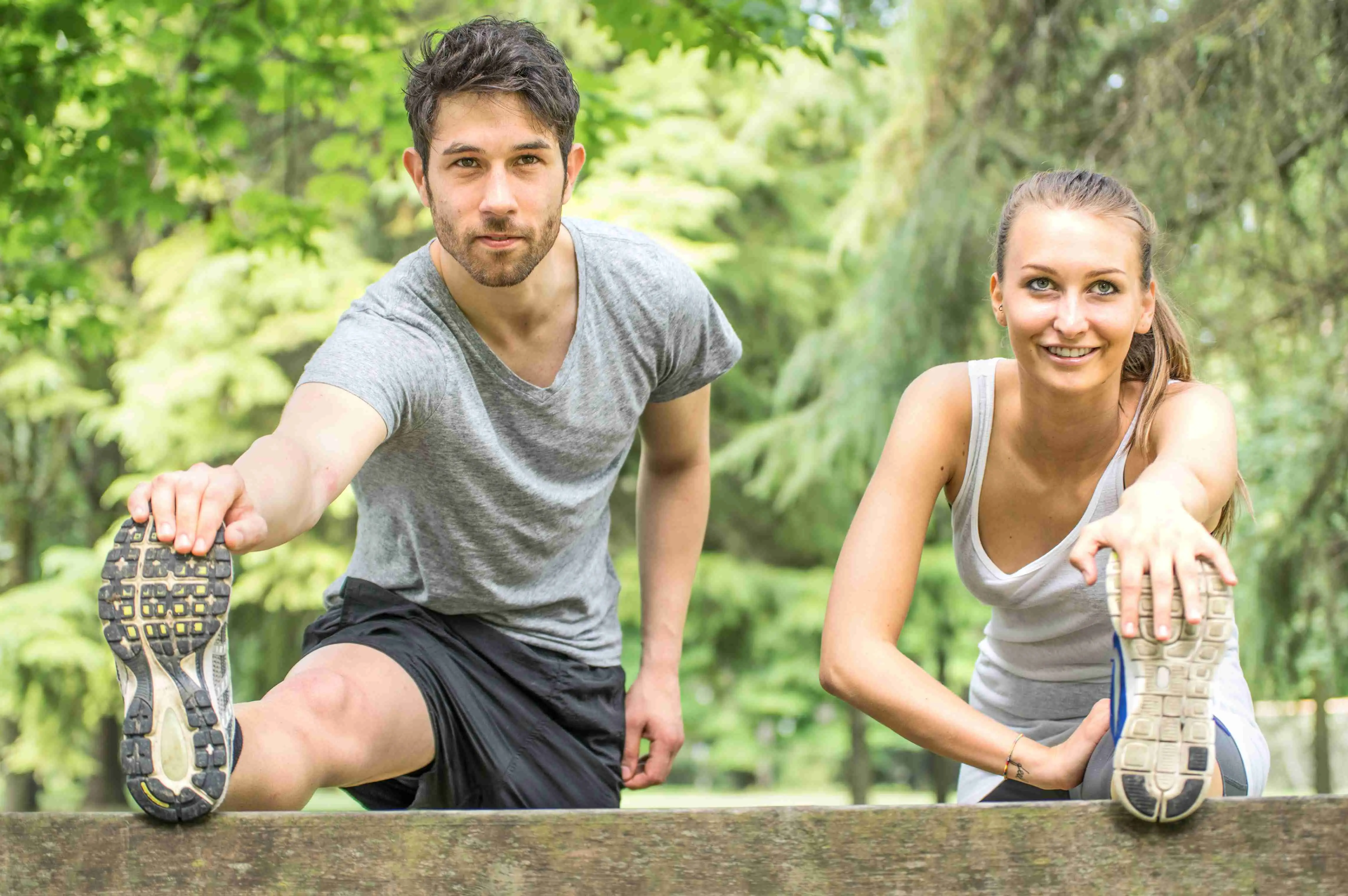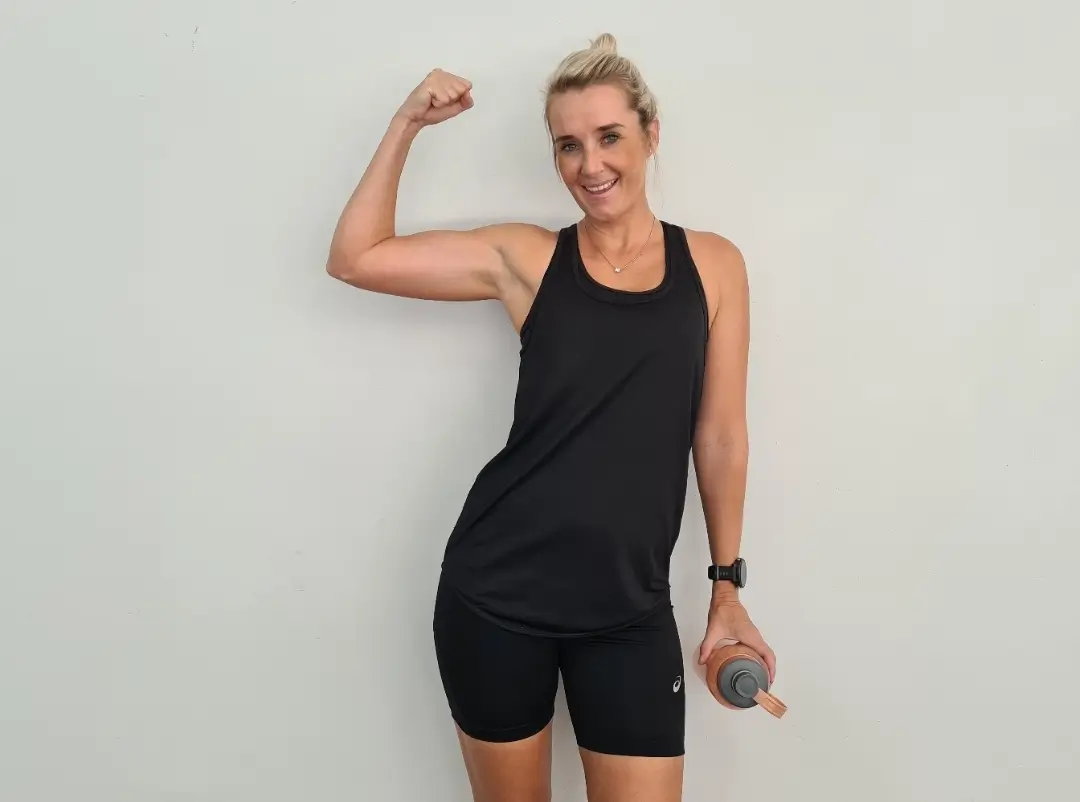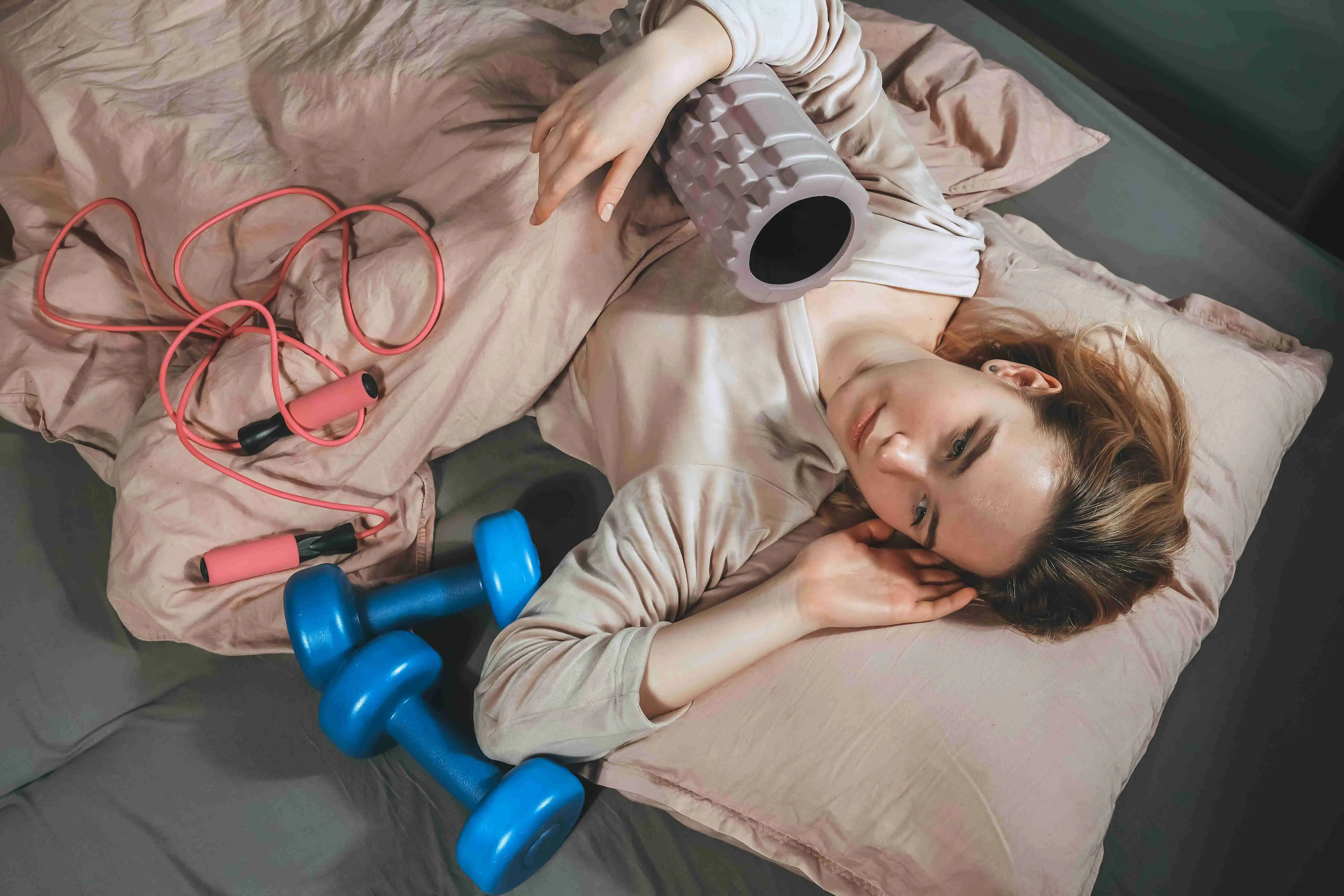Physical activity and exercise are some of the most important keys to wellness Engaging in regular exercise not only helps to keep our bodies fit and strong but also has numerous benefits for our mental and emotional well-being.
What is physical activity?
Physical activity is any bodily movement that requires energy. It can range from simple activities like walking and gardening to more intense exercises like running and weightlifting, and regular physical activity has a very positive impact on our physical and mental health.
How does exercise improve sleep?
Physical activity and sleep have a strong and interconnected relationship. Engaging in regular physical activity improves the quality and duration of sleep. Exercise helps to reduce stress and anxiety, which are common causes of sleep disturbances. It also helps to regulate the body's internal clock, making it easier to fall asleep and wake up at consistent times.
Additionally, physical activity increases the production of endorphins, which are natural mood boosters that can promote a sense of relaxation and calmness, leading to better sleep.
Types of Physical Activity

Physical activity plays a crucial role in maintaining overall health and well-being. There are various types of physical activities that individuals can engage in to improve their fitness levels.
Aerobics
Aerobics involves continuous and rhythmic movements that increase the heart rate and improve cardiovascular endurance, and it’s one of the most common physical activity types. Aerobic exercises such as running, cycling, and swimming help to strengthen the heart and lungs, burn calories, and improve overall stamina.
Regular participation in aerobics can also help to reduce the risk of chronic conditions such as heart disease, diabetes, and obesity.
Flexibility and Balance Activities
These exercises focus on improving joint mobility, muscle flexibility, and overall balance. Flexibility exercises such as stretching and yoga help to increase range of motion, prevent injuries, and improve posture. Balance training activities such as Tai Chi and Pilates help to enhance stability, coordination, and body control.
Incorporating flexibility and balance training into a fitness routine can greatly improve overall physical performance and reduce the risk of falls and injuries, especially in older adults.
Strength Training
This type of physical training typically involves the use of weights or resistance bands to challenge the muscles. Strength training exercises can include weightlifting, bodyweight exercises, or using machines at the gym. Regular strength training helps to increase muscle mass, improve bone density, enhance metabolism, and boost overall strength and power. It is particularly beneficial for individuals looking to increase their muscle mass and their overall strength.
Check out the Best Exercises for Better Sleep.
Benefits of Physical Activity
There are many benefits of exercise, as physical activity and health go hand in hand, from physical health to mental health, and the benefits of physical fitness even extend to social and emotional well-being and sleep quality.
Physical Health
- Better Endurance: Regular exercise helps to strengthen the cardiovascular system, increasing the heart's ability to pump blood efficiently and deliver oxygen to the muscles. This leads to better endurance, allowing individuals to engage in activities for longer periods without feeling fatigued.
- Weight Management: One of the physical activity benefits is that individuals who engage in regular exercise maintain a healthy body weight by burning calories and reducing excess fat. When combined with a balanced diet, physical activity can lead to weight loss or prevent weight gain.
- Stronger Bones and Muscles: These activities put stress on the bones, stimulating them to grow stronger and denser over time. Additionally, regular exercise helps to build and maintain muscle mass. As individuals age, they naturally lose muscle mass, but engaging in strength-training exercises can help slow down this process.
Mental Health
- Relieves Stress: Engaging in physical activity also helps to distract our minds from the daily pressures and worries we may be experiencing, allowing us to focus on the present moment and find temporary relief from stress.
- Improved Mental Health: When we exercise, our bodies release endorphins, which are commonly known as "feel-good" hormones. These endorphins help to elevate our mood and improve our mental health.
- Reduces Anxiety and Insomnia: When we engage in physical activity, our brain releases neurotransmitters like serotonin and dopamine, which are responsible for regulating our mood and promoting feelings of happiness and well-being. The increase in these neurotransmitters can help to alleviate symptoms of anxiety.
Social and Emotional
- Improved Social and Emotional Well-Being: Physical activity provides an opportunity for individuals to connect with others and build social relationships. Whether it's participating in team sports, joining a fitness class, or simply going for a walk with a friend, physical activity often involves interacting with others who share similar interests.
- Relieves Symptoms of Depression: Physical activity can serve as a distraction from negative thoughts and rumination, allowing individuals to focus on the present moment and experience temporary relief from their depressive symptoms.
- Improve Cognitive Functions: Exercise can enhance cognitive abilities such as memory, attention, and problem-solving skills. Physical activity increases blood flow to the brain, delivering vital nutrients and oxygen that support optimal brain function.
Sleep Quality
- Regulate Circadian Rhythm: The circadian rhythm is the internal clock that regulates our sleep-wake cycle and other physiological processes. Regular exercise helps to synchronize this rhythm by promoting better sleep quality and duration.
- Improve the Quality of Sleep: Incorporating physical activity into one's daily routine can greatly enhance the quality of sleep and contribute to overall well-being because exercise and sleep quality are tightly connected. Exercise improves the symptoms of many sleep-related issues and balances our hormones.
- Help You Fall Asleep Faster: People who engage in physical activity regularly tend to fall asleep faster and enjoy more restful sleep throughout the night. This is partly because exercise promotes the release of serotonin, a neurotransmitter that regulates mood and sleep patterns. Check out How To Fall Asleep Fast.
Best Time to Exercise

Determining the best time to exercise is a common question for many individuals seeking to optimize their fitness routine. The three main options to consider are morning, afternoon, and night workouts.
Morning Exercise
One of the primary reasons why many people consider morning exercising to be the best is that exercising for sleep because exercising in the morning sets a positive tone for the day ahead. It boosts energy levels and increases mental alertness, making it easier to tackle daily tasks and challenges.
Additionally, morning workouts can help jumpstart metabolism and improve overall productivity throughout the day.
Afternoon Exercise
Body temperature and muscle strength tend to peak during the late afternoon, making it an ideal time for more rigorous workouts.
Additionally, afternoon exercise can provide a much-needed break from work or other responsibilities, allowing individuals to recharge and refocus their energy for the rest of the day.
Night Exercise
Nighttime workouts can be a great way to relieve stress and unwind after a long day. They offer an opportunity to release built-up tension and promote relaxation before bedtime. However, it is important to note that exercising too close to bedtime may lead to difficulty falling asleep for some individuals.
Check out the Best Time to Exercise for Better Sleep.
Starting a Physical Activity Routine
Starting a physical activity routine is an important step towards improving overall health and fitness; however, to create a routine, you need to follow some simple steps so you can make physical activity part of your lifestyle and bring numerous benefits to your overall health and well-being.
Assessing Your Fitness Level
Before diving into any exercise program, it is essential to assess your fitness level. You can achieve this by consulting with a healthcare professional or by completing a fitness assessment. Assessing your fitness level helps determine where you currently stand and what areas need improvement.
Setting Realistic Goals
Setting unrealistic goals can lead to frustration and demotivation. It is important to be specific about what you want to achieve and set achievable milestones along the way.
For example, if your goal is to lose weight, start by setting a realistic target of losing 1-2 pounds per week. This allows for steady progress without putting undue pressure on yourself.
Creating a Balanced Exercise Plan
Pushing yourself too hard without proper rest can lead to injuries and burnout. Remember that consistency is key when it comes to physical activity.
Aim for at least 150 minutes of moderate-intensity aerobic activity or 75 minutes of vigorous-intensity activity per week, along with strength training exercises at least twice a week.
Staying Motivated and Overcoming Barriers
Starting a physical activity routine can be a challenge, but with the right mindset and strategies, it is possible to stay motivated and overcome barriers. One way to stay motivated is by finding activities that you enjoy.
Whether it's going for a run, taking a dance class, or playing a sport, finding an activity that you genuinely enjoy will make it easier to stay motivated and committed. Additionally, tracking your progress can be a great source of motivation.
Safety Tips for Physical Activity

Engaging in physical activity is an important part of maintaining a healthy lifestyle. However, it is crucial to prioritize safety while participating in any form of physical activity. By following a few simple safety tips, individuals can minimize the risk of injury and maximize the benefits of their workout.
Warm-Up and Cool-Down Routines
A warm-up helps to gradually increase heart rate and blood flow to the muscles, preparing them for the upcoming exercise. It should include dynamic stretches and light aerobic exercises.
Similarly, a cool-down helps to gradually bring the heart rate and breathing back to normal levels and prevent muscle stiffness.
Proper Form and Technique
This ensures that the muscles are being used correctly and efficiently, reducing the risk of strains or other injuries. Whether it is weightlifting, running, or any other form of exercise, it is crucial to learn and practice the correct techniques.
Seeking guidance from a qualified fitness professional or trainer can be immensely helpful in understanding and maintaining proper form.
Hydration and Nutrition
Proper hydration and nutrition help regulate body temperature, lubricate joints, and transport nutrients to the muscles. It is recommended to drink water before, during, and after exercise, especially when engaging in intense or prolonged physical activity.
FAQs
Why do I feel sleepy after working out?
Physical exercise can be physically demanding and can tire the body, leading to a feeling of fatigue. Secondly, during exercise, the body releases endorphins, which are hormones that promote relaxation and a sense of well-being. These endorphins can also induce sleepiness.
Is sleeping after exercising bad for you?
Sleeping after exercising is not necessarily bad for you. It can be beneficial for your overall health and recovery. After a strenuous workout, your body needs time to rest and repair itself. Sleep is an essential part of that process, as it allows your muscles to recover, repair any damage, and grow stronger. Determining whether you should exercise before bed or not varies from one person to another, because some people feel more alert after working out, while others feel sleepy after exercising.
What are the negative effects of exercising on sleep?
One of the main negative effects of working out before bed is the stimulation of the central nervous system. That's why some people can’t sleep after working out Vigorous exercise can increase adrenaline and cortisol levels, so for some people, it's not recommended to exercise before bed. Learn more about Sleeping After Exercise.
How much exercise do I need to improve my sleep quality?
Determining the optimal amount of exercise needed to enhance sleep can vary from person to person. We recommend at least 150 minutes of moderate-intensity aerobic activity or 75 minutes of vigorous-intensity aerobic activity per week for adults.
Do athletes sleep better?
Athletes tend to sleep better than the general population due to various factors. Firstly, regular exercise helps promote better sleep quality by reducing stress and anxiety levels. Secondly, physical exertion enhances the body's need for rest and recovery, leading athletes to prioritize sleep to aid in muscle repair and growth. Additionally, athletes are more likely to follow a consistent sleep schedule, which helps regulate their body's internal clock and promotes better sleep-wake cycles.
Conclusion
The importance of physical activity can’t be overstated. Regular exercise and physical movement enhance cardiovascular health, elevate mood, lower stress levels, and enhance the quality of sleep. The benefits of regular exercise are undeniable.
To reap these rewards, individuals of all ages must incorporate physical activity into their daily routines.
Karen Barnard
Karen is a Human Movement Science expert and a certified sports nutrition and massage therapist. At Sleepiverse, she combines her passion for human movement science and sleep health to educate herself and her readers about healthier sleep. In addition to writing articles, Karen manages a fitness studio offering private training, athletic conditioning, and sports massage therapy. She focuses on providing people with a holistic environment for people to reach their health goals, often incorporating stretch therapy to promote mental tranquillity and help people improve their sleep.


